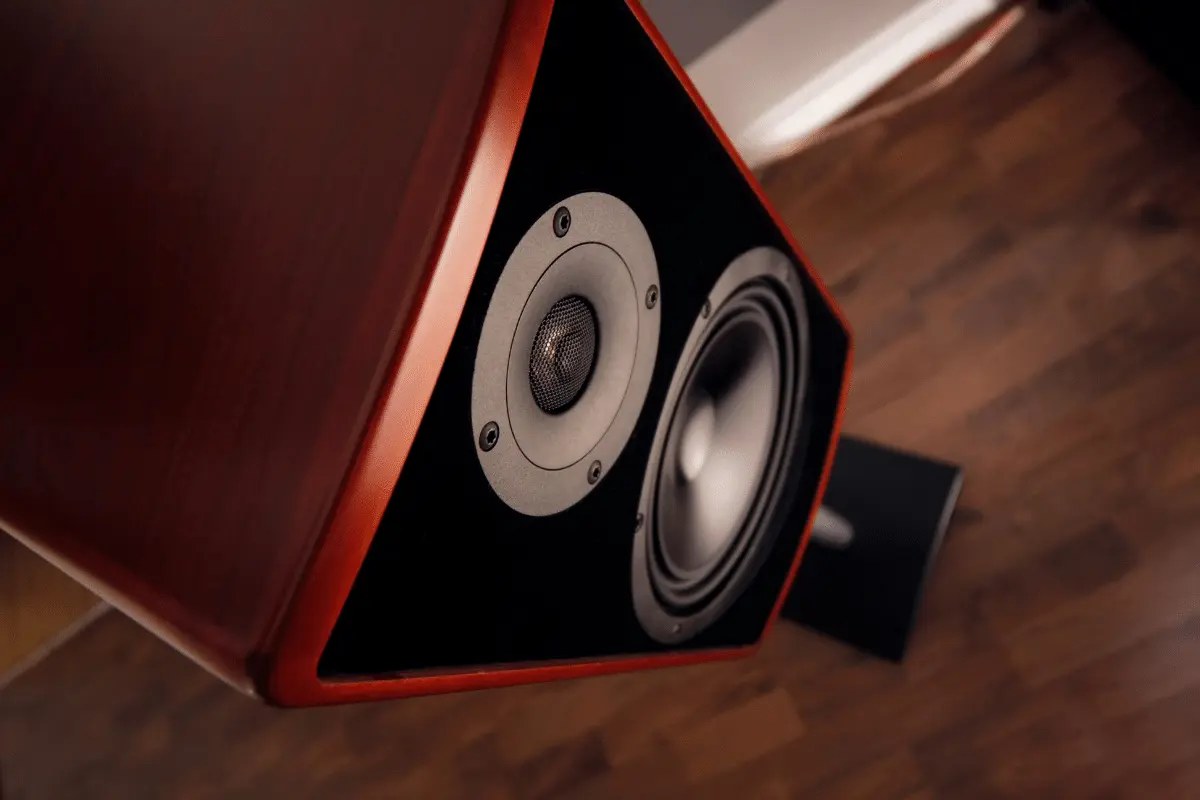Welcome, fellow music enthusiasts and glasses wearers, to the fascinating world of bone conduction headphones! These innovative devices have revolutionized the way we experience sound by bypassing our eardrums entirely.
Unlike traditional headphones that rely on speakers placed directly over or inside our ears, bone conduction headphones work by transmitting sound vibrations through our cheekbones and directly into our inner ear. It’s like having a private concert playing inside your head!
The Glasses-Wearer’s Dilemma
But wait, there’s a catch – and it’s one that many of us who wear glasses can relate to all too well. The problem arises when we try to combine the joy of listening to our favorite tunes with the necessity of wearing glasses.
You see, conventional headphones often create discomfort or interfere with the proper positioning of eyeglasses, leading to a constant battle between clear vision and immersive audio. The struggle is real!
Whether you’re rocking stylish spectacles or preserving your 20/20 vision with prescription lenses, navigating the compatibility between bone conduction headphones and glasses can be perplexing. But fear not!
We’re here to guide you through this conundrum and shed light on whether you can indeed wear these futuristic headphones while sporting your beloved pair of eyeglasses. In the next sections, we will delve into how bone conduction technology works its magic before exploring the compatibility between these innovative headphones and various types of glasses frames.
Stick around for some valuable tips on how to optimize your headphone-glasses combo without sacrificing comfort or audio quality. So grab your favorite mug filled with steaming coffee (or maybe a cuppa tea if you fancy), settle into a cozy spot, and let’s embark on this enlightening journey together!
Get ready to unlock new possibilities in your audio experience while maintaining your impeccable eyewear game. It’s time to find out if you can truly have the best of both worlds – bone conduction headphones and glasses, united in perfect harmony!
Understanding Bone Conduction Technology
Bone conduction technology, while it may sound futuristic, is actually quite fascinating in its simplicity. At its core, bone conduction relies on the natural ability of our bones to conduct sound vibrations.
When we hear sounds through the air, they travel as sound waves that reach our eardrums. Our eardrums then vibrate and transmit these vibrations to the inner ear, where they are transformed into electrical signals that our brain interprets as sound.
With bone conduction headphones, however, things work slightly differently. Rather than transmitting sound waves through the air and into our eardrums, these innovative gadgets bypass the eardrums altogether.
Instead, they utilize transducers that rest on our cheekbones or just in front of our ears. These transducers send vibrations directly into our skull bones and then to the cochlea, allowing us to perceive sound without obstructing the ear canal.
Discussion on the Benefits of Bone Conduction for Individuals with Hearing Impairments
Bone conduction technology offers a range of benefits for individuals with hearing impairments or other auditory issues. Unlike traditional headphones or hearing aids that rely on delivering sound waves through the ear canal or by amplifying external sounds, bone conduction devices provide an alternative pathway for auditory stimulation.
For those with conductive hearing loss caused by issues such as damaged eardrums or blockages in the ear canal, bone conduction offers an effective solution. By bypassing these problem areas and directly vibrating the skull bones which connect to the cochlea, individuals can still experience sound without interference.
Another significant benefit is for individuals with single-sided deafness (SSD). With bone conduction headphones placed on their non-hearing side and functioning earplaced right beside their better ear,audio signals can be transmitted from one side of their head to another via vibrations.
This enables individuals to perceive sound in both ears, leading to a better sense of audio balance and spatial awareness. Additionally, bone conduction technology allows external sounds to be heard simultaneously with the audio produced by the headphones.
This feature is especially beneficial for those who rely on hearing environmental cues or maintaining awareness of their surroundings, such as cyclists or joggers. By leaving the ear canal open, bone conduction headphones offer a safer and more immersive listening experience.
Bone conduction technology provides an alternative method for sound transmission that can benefit individuals with hearing impairments or those seeking a unique listening experience. By understanding how bone conduction works and its advantages for different auditory conditions, one can make an informed decision regarding the use of bone conduction headphones in conjunction with glasses.
Compatibility of Bone Conduction Headphones with Glasses
Exploring the design features that allow for simultaneous use of headphones and glasses
When it comes to wearing bone conduction headphones with glasses, compatibility is key. Thankfully, manufacturers have recognized the needs of glasses wearers and have incorporated some clever design features into their headphone models. One such feature is adjustable headbands or temple arms.
These nifty additions allow users to customize the fit according to their head size and shape, ensuring a secure and comfortable experience. Whether you have a petite head or a larger-than-life cranium, these adjustable components come to your rescue, eliminating any worries about discomfort or slippage.
Flexible materials used in headphone frames to minimize discomfort or interference with glasses
Another ingenious aspect that aids in the compatibility of bone conduction headphones with glasses is the use of flexible materials in the construction of headphone frames. Manufacturers understand that no one wants their favorite pair of shades crushed against their temples by unyielding headphone bands.
To prevent this inconvenience, they utilize materials that provide elasticity and resilience. This flexibility not only ensures a snug fit on your head but also reduces any discomfort caused by pressure points between your glasses’ temple arms and the headphone bands.
By incorporating adjustable components and flexible materials into their designs, bone conduction headphone manufacturers are striving to create products that seamlessly integrate with your beloved pair of spectacles. So now you can enjoy both crystal-clear audio through your cheekbones and maintain your impeccable sense of style without any compromise!
Tips for Wearing Bone Conduction Headphones with Glasses
Proper positioning of both headphones and glasses on the head to ensure optimal sound transmission and comfort
When it comes to wearing bone conduction headphones with glasses, finding the right position is key. You don’t want your glasses getting in the way of those sweet vibrations or your headphones causing discomfort on your temples. To achieve the perfect harmony, start by placing the headphone transducers on your cheekbones, just in front of your ears.
This placement allows for clear sound transmission while leaving enough space for your glasses’ temple arms to rest comfortably. It’s essential to find a balance where the headphones sit securely without interfering with the fit of your trusty spectacles.
Adjusting the headphone placement slightly forward or backward on the cheekbones for better audio quality
Now that you’ve found a good starting point, let’s talk about fine-tuning that audio experience. If you notice any imbalance or lack of clarity in sound, don’t fret – a simple adjustment can do wonders. Try slightly moving the headphones forward or backward along your cheekbones.
This slight shift can optimize how vibrations travel through your facial bones and improve audio quality. Experiment until you find that sweet spot where every beat is crystal clear and music becomes an immersive journey.
Aligning the glasses’ temple arms properly to avoid pressure points or slippage caused by headphone bands
As much as we love our bone conduction headphones, we wouldn’t want them causing discomfort or making our beloved eyeglasses go askew. To prevent pressure points or annoying slippage caused by headphone bands, pay attention to how you align them with your glasses’ temple arms.
Make sure they don’t overlap or press tightly against each other; this could lead to discomfort during long listening sessions. Gently adjust both your glasses and headphones to sit comfortably on your temples, ensuring that each accessory has its rightful place.
Rest assured, with proper alignment, you can enjoy the best of both worlds – clear sound and a steady hold for your stylish frames. So there you have it, dear readers – some handy tips to help you wear bone conduction headphones with glasses like a pro.
With careful positioning, minor adjustments for optimal audio quality, and ensuring proper alignment between your glasses and headphones, you’ll be able to rock both accessories without compromising comfort or style. Now go forth and enjoy the crisp sounds of bone conduction while looking effortlessly cool in your spectacles!
Potential Challenges and Solutions
Addressing potential issues that may arise when using bone conduction headphones with glasses
Wearing bone conduction headphones with glasses can present a few challenges, but fret not, for solutions are at hand! One common issue is sound leakage caused by gaps between the headphone transducers and the temples of your glasses. To tackle this, you can try adjusting the fit of your headphones by slightly tightening or loosening them to create a more snug seal against your temples.
Alternatively, using foam pads between the transducers and the temples can help reduce sound leakage significantly. Experiment with different pad thicknesses to find what works best for you!
Discomfort caused by prolonged pressure from both headphones and glasses
Long periods of wearing both headphones and glasses can sometimes lead to discomfort due to pressure points on your ears or temples. It’s essential to give your body some respite! One solution is to take short breaks every hour or so to relieve any discomfort.
Additionally, exploring alternative designs that distribute pressure more evenly across your head might be worth considering. Certain headphone models feature adjustable headbands or temple arms that allow for a customized fit, reducing discomfort while ensuring optimal sound transmission.
Special Considerations for Specific Glasses Types
Challenges faced by users with specific types of glasses: Thick-framed glasses
Thick-framed glasses often pose unique challenges when it comes to finding suitable bone conduction headphones that can accommodate their bulkier temples. Fear not, fellow bespectacled music lovers!
There are options available that offer wider frames or adjustable temple arms specifically designed to accommodate thicker frames. Look out for models with flexible materials in the headphone frame construction as they offer more versatility in fitting over various types of eyewear. Conclusion:
While wearing bone conduction headphones with glasses may present a few challenges, they are by no means insurmountable. By making small adjustments in fit, using foam pads, taking short breaks, or exploring alternative designs, you can enjoy your favorite tunes without compromising your comfort or audio quality. Remember, technology is ever-evolving, and manufacturers are becoming more attuned to the needs of glasses wearers.
So fear not my fellow enthusiasts of both music and eyewear – the future holds promising developments that will make enjoying bone conduction headphones with glasses an even better experience! Keep rocking on!






Leave a Reply
You must be logged in to post a comment.